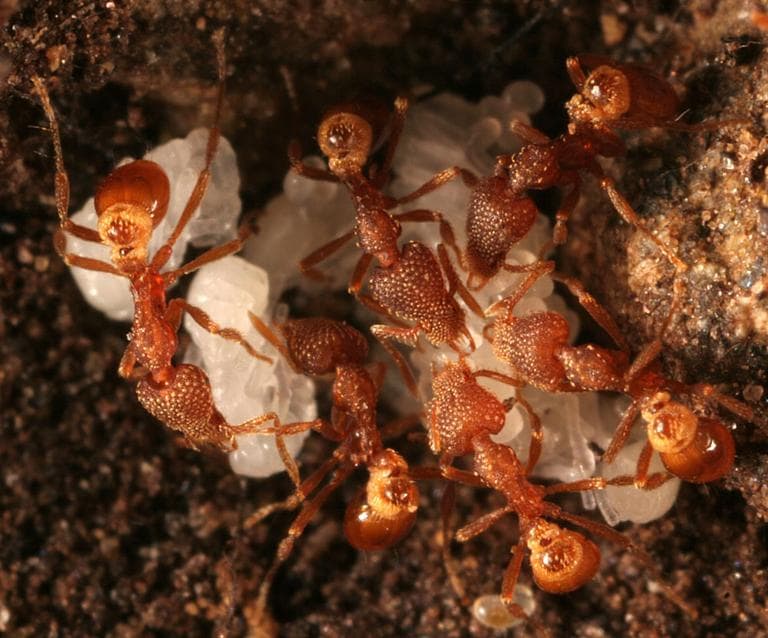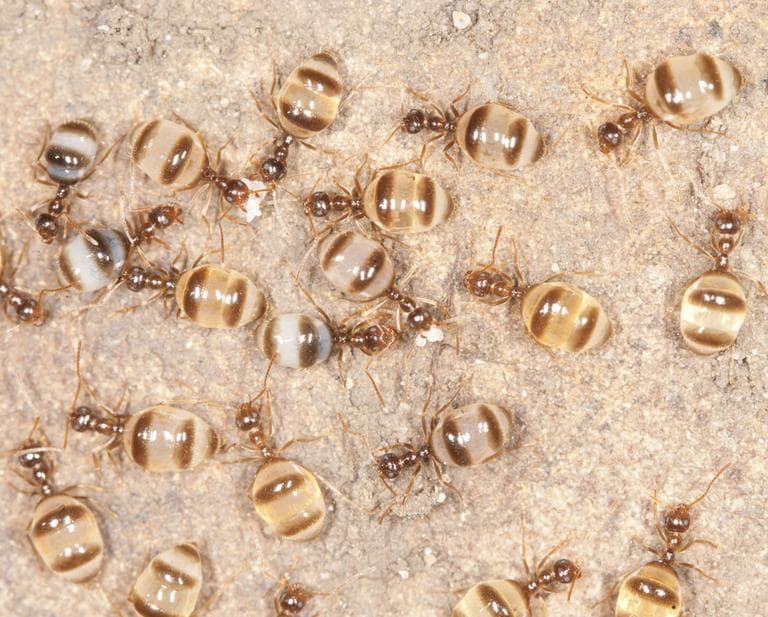Advertisement
Insect Insights From Author Of Field Guide To Ants

“E.O. Wilson at Harvard says, ‘Ants are the little things that run the world.’ If they really are the little things that run the world, we really need to know what they are,” says Aaron Ellison, co-author of the new “Field Guide to the Ants of New England” (Yale University Press), which aims to be the first popular guide to the social insects.
Ellison, a research fellow in ecology at Harvard University's Harvard Forest and adjunct research professor of biology and environmental conservation at the University of Massachusetts in Amherst, gives a free talk about the book at the Harvard Museum of Natural History, 26 Oxford St., Cambridge, at 6 p.m. Thursday, Nov. 29. He’ll also be talking and signing copies of the book at the New England Wild Flower Society’s Garden in the Woods in Framingham at 1:30 p.m. Sunday, Dec. 2, and at the Harvard Forest in Petersham at 6:30 p.m. Monday, Dec. 3.
“There are 132 different kinds [of ants] in New England alone,” Ellison says. Some of his ant insights:
“The most interesting one we have [in terms of anatomy] is in the genus Pyramica (pictured at top). We call them the Lady Gaga ant because they have triangular heads and they have filmy skirts over their butts.”
“There’s a group of seed-harvesting ants called Pheidole—Pheidole means "thrifty", so-named because they save the seeds. … Their majors have these really, really big heads with really big brains in them. … Some researchers use them for studying the neurology of behavior. They’re big enough that they can actually work with the brains.”
“Ants are really important to our lives. North of where the glaciers were 15,000 years ago, like New England, there are no native earthworms. … Ants made the soil. … They made about an inch of topsoil every 200, 250 years.”
Ellison is part of a team at Harvard Forest that has been studying how global warming might affect ants: “Ants like many other creatures are very tightly linked to the local environment. … What we see as we warm up areas of the forest is we get more active ants. And cold climate ants move out and the warm climate ants move in.” Since ants are a foundation of the whole ecosystem, this fundamentally affects the landscape.
“We have ants that farm and eat fungus. Ants are really one of the only other species on the planet, besides humans, that farm. They do agriculture. … They tend aphids and scale insects like we tend cows.”
“Carpenter ants don’t eat wood. … What they do is find rotted wood and they clean out the wood to find spaces to live in. The ones in your house are satellite colonies of the main colony that’s outside. … Carpenter ants are a signal to you that your house is in trouble. … If you solve your moisture problem and you solve your house [rot] problem, the ants will go away.”

This program aired on November 28, 2012. The audio for this program is not available.
